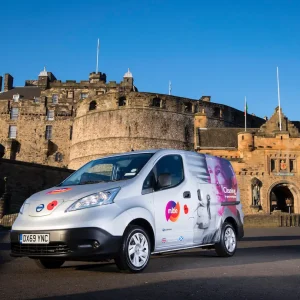
Organisations large and small are looking for ways to increase efficiency in employee travel, particularly driving down grey fleet usage to reduce both emissions and costs.
Encouraging employees to use alternatives to private cars – and embrace the possibilities of multi-modal journeys, active travel, rental and car clubs – requires changing long-established habits. That can be difficult for time-pressed travel managers to action alongside other priorities.
One important question to ask is how effectively your mobility contract is being implemented. The way in which your rental strategy is embedded in your organisation from day one can have a significant impact on the success or otherwise of encouraging this shift in habits.
If it’s easy, smooth and reliable, people are more likely to use it. And if it’s well-procured and well-implemented, it will save you money and time.
Here are six ways to ensure your rental contract is working as hard as it can to deliver a more attractive, efficient and cost-effective solution than grey fleet.
Engage with your stakeholders
What do your business travellers need? Where do their journeys start, go to and end? With hybrid working, the default start point may no longer be the office, it may be home.
You need a highly detailed understanding of the types of journeys your employees need to make, how they would like to make them and how you can help them access the right combination of transport choices. Procurement teams may have different ideas from your employees as to what constitutes an effective travel policy. Armed with good data and insight, you can ensure you are able to implement a policy that works for everyone.
Look beyond the headline daily rate
If driving down costs is a priority, check the ancillary charges such as delivery and collection over and above the headline daily rate. You won’t have a clear picture of the real costs until you add these in. Make sure you get the total cost of ownership, otherwise it could end up costing you more in the long run.
Think about the future
You’re not just buying a rental solution for today and tomorrow. Make sure there is the potential to futureproof your travel options. You may just want traditional daily rental right now because ‘it’s all you’ve ever needed’, but who’s to say you might not need something else in a few months’ time?
Know the payments process
To ensure tight control of costs and the smooth running of the contract, it’s vital to understand precisely where invoices need to be sent, whether they need purchase orders and how they are approved. Walk your mobility partner through the process from start to end, so they can adapt their systems to work seamlessly with your processes, making life easier for everyone.
Reporting is key
Avoid the end-of-year panic by ensuring you are clear on what data you need from which stakeholders, both within your own organisation and from your rental partner.
Make sure that you have all the data you need for your company’s sustainability reporting from the outset, as much of which is mandatory. End-of-year reporting season will be infinitely easier if you know what data on CO2 emissions, mileage etc. other parts of the business are going to need, and you’ll be better equipped to share the benefits of the new approach.
Communicate the benefits of change
If you’ve changed supplier to deliver your bespoke travel policy, you need to explain the reasons for the shift to your employees and get them bought-in to what you’re now doing.
Whether it’s fewer cancelled bookings, a greater choice of cars, easier access to rental vehicles, or the ability to change vehicle at short notice, make sure the benefits of your new rental partnership are clearly communicated to demonstrate why it’s worth the hassle of a switch.
Paul McCorkell is director of business rental UK & Ireland at Enterprise





